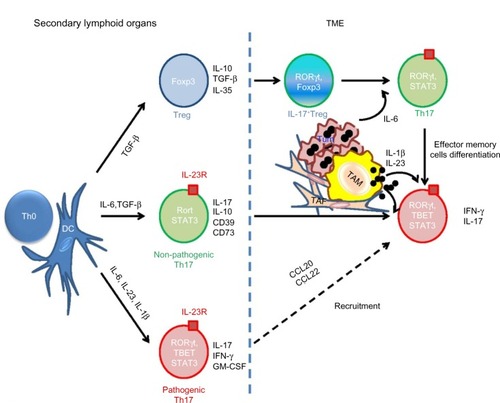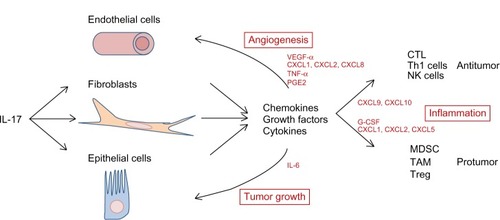Figures & data
Table 1 List of experimental murine models analyzing the roles of IL-17/IL-23 in tumor immunity
Table 2 List of studies in humans analyzing the links between cancer type and IL-17/Th17 detection
Table 3 Drugs affecting IL-17 and Th17 functions in preclinal and clinical development


